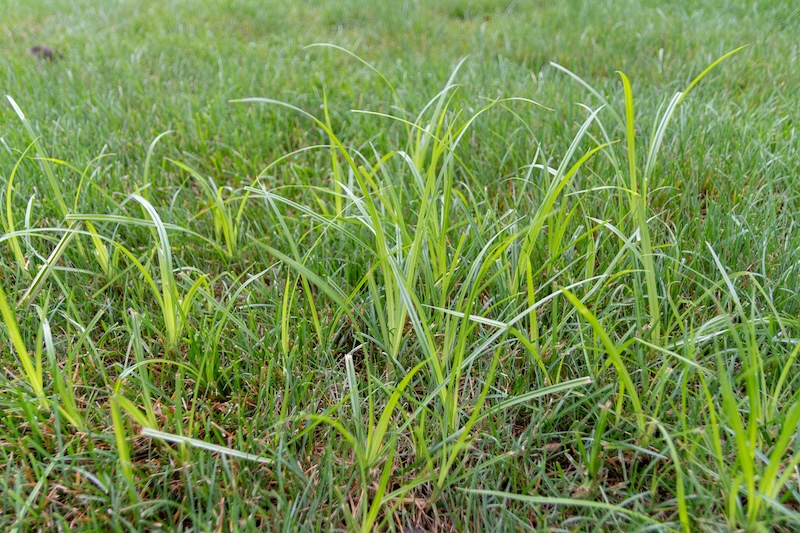Drought-Resistant Weeds in Texas: How to Identify and Control Common Problem Species
Effective Weed Management Strategies for Texas Homeowners During Dry Conditions
Texas homeowners know the challenge all too well: just when drought stress weakens your lawn, aggressive weeds seem to thrive and take over. With current drought conditions affecting approximately 20% of Texas and water restrictions becoming increasingly common, understanding and controlling drought-resistant weeds has never been more critical for maintaining a healthy lawn.
At Abracadabra Lawn Pest & Weed Control, we’ve been helping Texas families conquer their toughest lawn challenges for years. Our team of certified professionals understands the unique climate conditions that make the Lone Star State a battleground between desirable turfgrass and persistent weeds. We combine proven scientific methods with local expertise to deliver results that last, even during the most challenging drought conditions. When drought stress weakens your lawn’s natural defenses, these opportunistic weeds quickly establish themselves and spread aggressively. Our comprehensive approach doesn’t just eliminate existing weeds—we create long-term management strategies that help your lawn stay resilient and weed-resistant throughout Texas’s unpredictable weather patterns.

Why Drought-Resistant Weeds Thrive When Your Lawn Struggles
Understanding why certain weeds excel during drought conditions is key to developing effective control strategies. Unlike your carefully maintained turfgrass, drought-resistant weeds have evolved sophisticated survival mechanisms that allow them to flourish when water becomes scarce.
These resilient invaders employ several strategies to outcompete struggling lawn grass. Many develop extensive, deep root systems that can access water sources far below the surface—often reaching depths of 3-6 feet compared to typical lawn grass roots that extend only 6-12 inches deep. Others have specialized leaf structures that reduce water loss, while some can store water in their tissues for extended periods.
Drought conditions create the ideal environment for weed takeover. As your lawn thins due to water stress, bare spots develop that provide perfect germination sites for weed seeds. Compacted soil from dried-out conditions also favors many drought-tolerant weed species that actually prefer harder growing conditions.
Most Common Drought-Resistant Weeds in Texas
Several species consistently cause the most problems for homeowners across Texas. Crabgrass tops the list as one of the most aggressive weeds, germinating when soil temperatures reach 55-60°F and thriving in hot, dry conditions. Its low-growing, spreading habit allows it to quickly fill bare spots.
Spurge (Prostrate Spurge) forms distinctive flat mats in bare, sunny areas. This annual weed excels in compacted, dry soils and can produce thousands of seeds per plant. Sandbur (Grassbur) presents both aesthetic and safety concerns with its painful seed burs, growing readily in sandy, dry soils throughout Texas.
Dallisgrass forms distinctive clumps with deep root systems that survive extended drought periods. Other significant problem species include Nutsedge (yellow and purple varieties), which spreads through underground tubers and resists many herbicides, and Field Bindweed, a vine-like weed that smothers nearby plants while surviving long droughts.
Our Proven Weed Control Strategy
At Abracadabra Lawn Pest & Weed Control, we’ve developed a multi-faceted approach that addresses both immediate weed problems and long-term prevention. Our strategy recognizes that successful weed control during drought conditions requires specialized techniques.
Our treatment program begins with proper timing and targeted applications. We apply pre-emergent herbicides at critical windows—typically in early spring (February-March) and again in late summer (August-September)—to prevent weed seeds from germinating. These applications are particularly effective against annual weeds like crabgrass and spurge.
For existing weeds, we use selective post-emergent herbicides that target specific weed types without harming your desired turfgrass. Our certified technicians identify each weed species and select the most effective treatment method, ensuring optimal results while protecting your lawn.
Beyond chemical treatments, we recommend cultural practices that strengthen your lawn’s natural weed resistance. Proper mowing height (keeping grass at 2.5-4 inches during drought) helps shade soil and prevent weed seed germination. Strategic watering practices encourage deep root growth in your lawn while avoiding conditions that favor weed establishment.
Protecting Your Lawn Investment
Prevention remains the most cost-effective approach to weed management. A healthy, dense lawn naturally resists weed invasion, even during challenging drought conditions. Our comprehensive programs focus on building this natural resistance through proper fertilization, aeration, and overseeding.
Soil health plays a crucial role in determining whether your lawn or weeds will dominate during stressful conditions. Compacted soils favor many drought-resistant weeds, so regular aeration helps ensure your grass can compete effectively. We recommend core aeration in spring and fall to improve soil structure and water infiltration.
Proper fertilization timing also influences weed pressure. Applying slow-release fertilizers during cooler months helps your lawn build reserves for surviving summer stress while avoiding excessive growth that requires more water.
Don’t let drought-resistant weeds take over your Texas lawn! Contact Abracadabra Lawn Pest & Weed Control today for a free consultation and customized treatment plan. Our experienced team knows exactly how to tackle Texas’s toughest weeds while protecting your lawn investment. Call us now and take the first step toward a beautiful, weed-free lawn that can withstand whatever Mother Nature brings!
